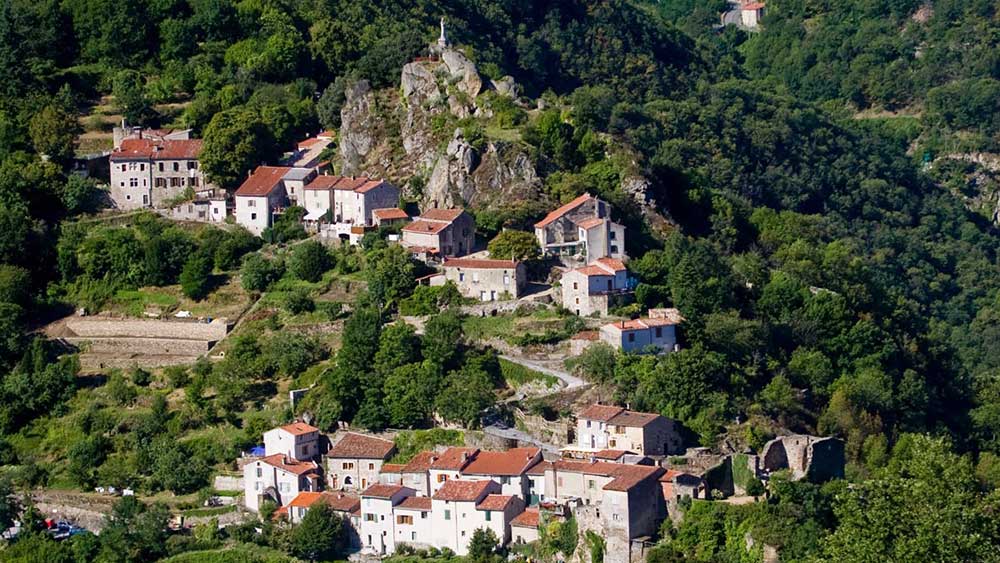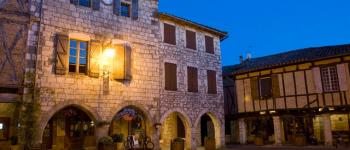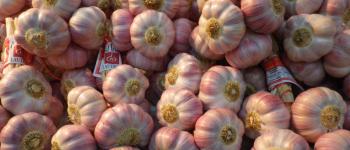
Hautpoul is a medieval hilltop village not open to traffic, overlooking the town of Mazamet by more than 300 m, Hautpoul is a high place of the Cathar resistance of the Montagne Noire.
Indeed, among the sites, castles and abbeys of the "Cathar Country" is the little-known Tarn village of Hautpoul, an eagle's nest which was one of the most active centres of the Cathar resistance in the first quarter of the 13th century.
Hautpoul, little-known village
Although some of its inhabitants continued to live there, most of them decided to settle in the valley, on the banks of the river Arnette, in a village which later became Mazamet. This town, historically known for its activities related to the de-lainage and the megisserie, decided at the beginning of the 2000s, to promote its historical heritage, with Catharism in mind, and opened the largest museum dedicated to Catharism in France.
A bit of History...
Hautpoul, an Occitan mountain castrum, founded according to legend by the Visigoth king Athaulf in 413, became a seigniory in Carolingian times.
At the end of the 11th century, the site, ruled by the Raimond dynasty, became part of the Trencavel movement, Viscounts of Albi and Arnaut Raimond and Peire Raimond, who were at the origin of the two co-seigneurial branches, shared the seigneury and the said castrum.
Of these two villages, only a statue of the Virgin remains today, which marks the site of the former upper castle, now razed to the ground.
In spite of the capture of 1212 by the Crusader armies of Simon de Montfort, the seigneury offered to the clandestine population a free zone of retreat during the waves of inquisitorial persecution.
Lords and knights of the surrounding area, all of whom were from Cathar families, gathered there around the co-lords.
After the turn of 1244 and the surrender of Montségur, the Church of Albigeois tried to reconstitute itself in exile in Lombardy. Until the 1280s, Isarn de Bonzom and Jordan de Saissac, the two main co-lords, thwarted the traps of the Inquisition and gave pledges to the Church and the king, while continuing to protect the outcasts. Remaining secretly faithful to the faith of their fathers, they ask, on their deathbed, for the consolation of a "good man" from the shadows.
Hautpoul today...
Today, the village is experiencing a new youth. Old houses welcome craftsmen and their workshops, the Association de la Rocque d'Hautpoul revives the medieval period through a small museum on the arts and practices of the Middle Ages and animations especially during the summer period, night strolls, historical re-enactments, archery competitions.
Exceptional panoramas over the Arnette valley and the town of Mazamet can be seen from the Virgin's Rock or the terraces of the old castle.
... its churches...
First of all, we must highlight the latest novelty, a footbridge linking Hautpoul to Mazamet, a 140 m long aerial path that crosses the Arnette gorges at a height of 70 m, offering an exceptional view of the valley.
In Hautpoul, several churches are worth a visit.
The church of the village of Hautpoul, in ruins, primitive of the parishes of Mazamet, erected on a hill set in a meander of the river Arnette between the town and the Moulin de l'Oule.
It is served by "Lou Cami Ferrat" or chemin de la Jamarié. In 1253 Jourdain de Saissac named it "Saint Sauveur d'Hautpoul".
The Church of Saint-Sauveur
After the destruction of Saint Sauveur d'Hautpoul, the Protestants dominated the region for nearly two centuries. In 1665, there were 1732 Protestants and only 314 Catholics using the church of Saint-Jacques at that time "Saint-Tsames" which became in 1805 the temple of the Reformed Church.
In the 18th century, the development of the textile activity attracted a rural population that was mainly Catholic. It was then decided to build the present Saint-Sauveur church (1740).
The austerity of its exteriors confirmed by its sober and square façade and its massive appearance contrasts with the polychromy of its interiors revealed in the frescoes by the painter Régagnon.
Note the presence of a real organ by Cavaillé Coll (1873).
Notre Dame Church
Neo Gothic church 1872 where 14 sculptures by Antoine ALOS are exhibited, reproducing the Passion of Christ, its stained glass windows were made by the monks of En Calcat.
The Church of the Sacred Heart of Bonnecousse
The idea of building a church at Bonnecousse came from a vow made on June 9, 1945, the feast day of the Sacred Heart, during the German occupation: "if Mazamet is spared from Nazi barbarism, a church dedicated to the Sacred Heart will be built. ».
The church was designed in 1959 by the architect Joseph Belmont and the engineers Jean Prouvé and Serge Ketoff. The lithurgical design was carried out by the Dominican fathers of the magazine "Art sacré". It has been listed as a Historic Monument under the 20th century label since 2001. Notre-Dame de Sanguinou is a Romanesque chapel of the 11th century located on the Causse de Caucalières and considered the oldest sanctuary in the department.
It is also worth discovering the Mazamet organs, all built by the Cavaillé Coll workshops, in the temple of the oratory, the church of Saint-Sauveur and the church of Notre-Dame. The "Autan en emportent les orgues" festival, organised every year in August, allows you to rediscover the 3 organs of the town with initiations and concerts.
Its temples
The Temple of St. James, originally a Catholic church founded in the 16th century, was donated to the Protestant community, which was important at the time.
Note its bell tower which served as a prison for a famous prisoner Paul Sirven.
The Temple Neuf
During the construction of the Church of Our Lady, the municipality, anxious to preserve the good understanding of the communities, decided to build a second temple. It will be Temple Neuf and its neo-classical façade. It was built in the heart of the Sagne district, mainly inhabited by a Protestant industrial population. The reduction of the latter and the important maintenance costs inside (the outside being maintained by the municipality) that they were responsible for, obliged the municipality to return it in 2002 to the Town Hall. Nowadays, this building has lost its religious vocation. The municipality is now in charge of it and is considering turning it into a cultural centre.
The Temple is classified as a Bâtiment de France.
The Temple of the Oratory
Secretariat and place of worship of the protestant church, this temple also serves as a concert hall during the organ festival.
Castres Mazamet tourist office Mazamet office
Village of Hautpoul
81200 Mazamet
Tél. : 05 63 61 27 07
accueil@tourisme-mazamet.com
https://www.tourisme-tarn.com/patrimoine-culturel/village-medieval-dhautpoul/




